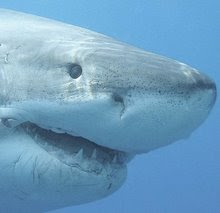STS-127 is the first of the final eight Space Shuttle missions. And then it will be over. Back to disposable rockets, parachute re-entry, and 'capsules'. Old-School.
Way back on April 12, 1981, when STS-1, the first flight of the first operational shuttle, the Columbia, left the launch pad in Florida, the story was entirely different. This was the new way to do things. This was the future of manned spaceflight. This was the 'Buck Rogers' that was to - in the long run - save us bucks, turning space into a frequent and (relatively speaking) affordable destination.
And it was something special to behold. Although skeptics did abound - I was one.
I can remember reviewing a fold-out diagram of the Columbia in National Geographic and just knowing the dang thing wasn't going to work. It was too ungainly, and there were too many things to go wrong. Not like the relatively simple rockets in use at the time. And those failed often enough too, despite their simplicity. My family lived in Lompoc, CA, next door to Vandenberg AFB, a sort of west-coast Cape, and a self-destructed, off-course rocket was a not too uncommon sight in the night skies.
But on April 12, 1981, the Columbia roared aloft and, despite all fears, made it safely home. Seeing that orbiter glide in on the dry lake at Edwards AFB was truly inspirational, and a sure sign that a new age of spaceflight had dawned.
Time and tides are tough on all things made by humans, however, and the ensuing years since that triumphant first mission have not been kind. There have been many successes, true, some of them tremendous achievements, but the overall goal of the project has failed. Spaceflight is not cheaper than before - those reusable orbiters need extensive and expensive upkeep and repairs after every mission; the flights have never become routine - never truly 'shuttles'; and there have been tragic failures.
So, with the final missions just ahead, where do we go next? NASA seems intent on following a model of expendable spacecraft, including fully-automated ones not meant to be piloted by humans.
I find that logical, but immensely sad and uninspiring. Despite NASA's failure to build a truly reusable manned space vehicle with the shuttle program, the concept remains a good one, and a worthy goal for future development.
Besides, those of us who grew up watching 'Star Trek' yearn to see a spaceship named 'The Enterprise' someday, and unlike that early shuttle prototype of the same name, we want it to be fully-functional. To boldly-go, as it were.
And it would be best if that future Enterprise didn't just shoot up into space never to be seen again. It should fly grandly back from it's adventures and land here on Earth, intact, just like a space shuttle...





No comments:
Post a Comment